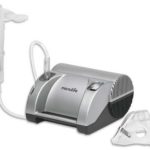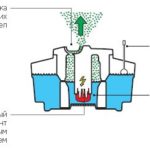The difference between a compressor inhaler and an ultrasonic inhaler
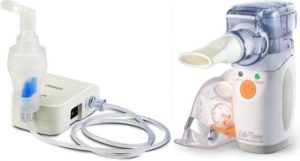 Long gone are the days when grandmother or mother forced us to breathe over a hot pan in order to cure a sore throat or a common cold. Now, at home, for this purpose, people use inhalers, or as they are also called, nebulizers.
Long gone are the days when grandmother or mother forced us to breathe over a hot pan in order to cure a sore throat or a common cold. Now, at home, for this purpose, people use inhalers, or as they are also called, nebulizers.
The most popular types of household appliances for this purpose are compressor-type devices and ultrasonic nebulizers. Both types of devices are intended for the same purposes - the prevention and treatment of colds and chronic diseases, as well as viral respiratory tract infections, by inhaling tiny particles of a drug of chemical or plant origin with the air.
The content of the article
The specific difference between a compressor inhaler and an ultrasonic inhaler
The difference between compressor and ultrasonic devices lies in the principle of converting a liquid containing a medicinal composition into an aerosol state.
In compressor-type devices, the transition of the medicinal solution into a dispersed state occurs mechanically, due to the pressure created by the piston mechanism. In ultrasound machines - by exposing drug molecules to ultrasonic waves.
Ultrasonic nebulizers are capable of converting a solution of a medicinal composition into a smaller fraction (from 0.5 microns) compared to compressor nebulizers (from 2 microns), but they have some restrictions on the type of drugs used.
Important! Ultrasound devices destroy some types of antibiotics and hormonal medicinal compounds, so their use through these devices will be useless.
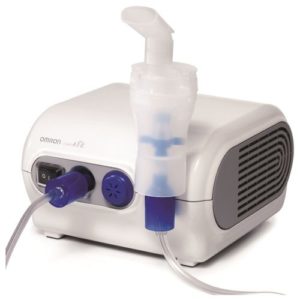 Mechanical type nebulizers make some noise during operation, while ultrasonic types operate silently. Ultrasound devices consume less energy, so among them there are more often devices that can operate from autonomous power sources (battery, accumulator).
Mechanical type nebulizers make some noise during operation, while ultrasonic types operate silently. Ultrasound devices consume less energy, so among them there are more often devices that can operate from autonomous power sources (battery, accumulator).
The similarity between these types of devices is that they both have a container for the drug, a nebulizer, an air tube and a mask or mouthpiece with replaceable parts. The composition, in the nebulizer chamber, is converted into a dispersed state and, through a nebulizer, through an air tube, enters a mask or mouthpiece for inhalation by the patient.
The choice between a mechanical or ultrasonic nebulizer should be based on the conditions of use of the device. Each of these types has its own advantages and disadvantages.
Household compressor-type inhalers
Design and principle of operation of compressor nebulizers
A mechanical household appliance consists of the following main parts:
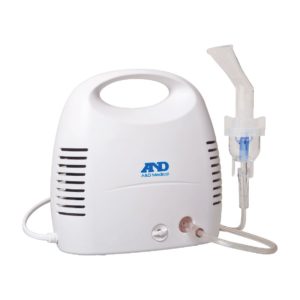 electrical part of the device (power cord, transformer);
electrical part of the device (power cord, transformer);- the mechanical part is a compressor that creates pressure in the chamber of the device for spraying the composition and a sprayer;
- spray particle size regulator;
- inhalation container for placing medicine;
- air inhalation tube for supplying aerosol to the mask or mouthpiece;
- a mask or mouthpiece for the patient to inhale the aerosol.
Under the influence of pressure created by the compressor of the device, the substance from the inhalation container, through the nebulizer and inhalation tube is supplied to the mask. The patient inhales the aerosol, thereby distributing the medicinal composition through the respiratory tract.
Advantages of compressor inhalers
- work with a wide range of medications;
- there is no need for periodic replacement of components;
- adjustable particle size.
Disadvantages of compressor inhalers
- noise produced during operation;
- limited time of continuous work;
- high losses of substances, incl. the remainder of the substance in the inhalation chamber;
- lack of autonomous operation.
Household ultrasonic inhalers
Design and principle of operation of ultrasonic inhalers
A household ultrasonic device consists of:
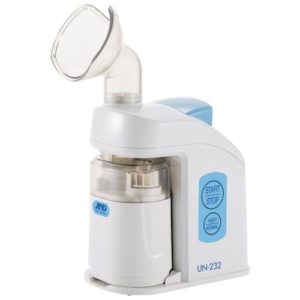 the electrical part of the device is represented by a mains power supply unit or a compartment for autonomous power supplies;
the electrical part of the device is represented by a mains power supply unit or a compartment for autonomous power supplies;- the working part is a generator of high-frequency waves that split the medicinal composition and the atomizer;
- spray size regulator;
- nebulizer chamber for placing drug solutions;
- an inhalation tube for supplying an aerosol substance to a mask or mouthpiece;
- a mask or mouthpiece for inhalation of the sprayed substance by the patient.
Under the influence of ultrasonic waves, the substance is supplied from the container, through a nebulizer and an inhalation tube, to a mask or mouthpiece. The patient inhales the aerosol substance, thereby distributing the medicinal substance through the respiratory tract.
Reference! Ultrasonic nebulizers operate silently, therefore they are recommended for treating infants.
Advantages of ultrasonic inhalers
- compact dimensions of devices;
- silent operation;
- possibility of operation from autonomous power sources;
- finer spray fraction for penetration into the lower respiratory tract.
Disadvantages of ultrasonic inhalers
- restrictions on the drugs used - ultrasound destroys some types of antibiotics and negatively affects hormonal drugs;
- do not work with high-viscosity drugs;
- the need for periodic (annual) replacement of the working chamber for the placement of drugs.

